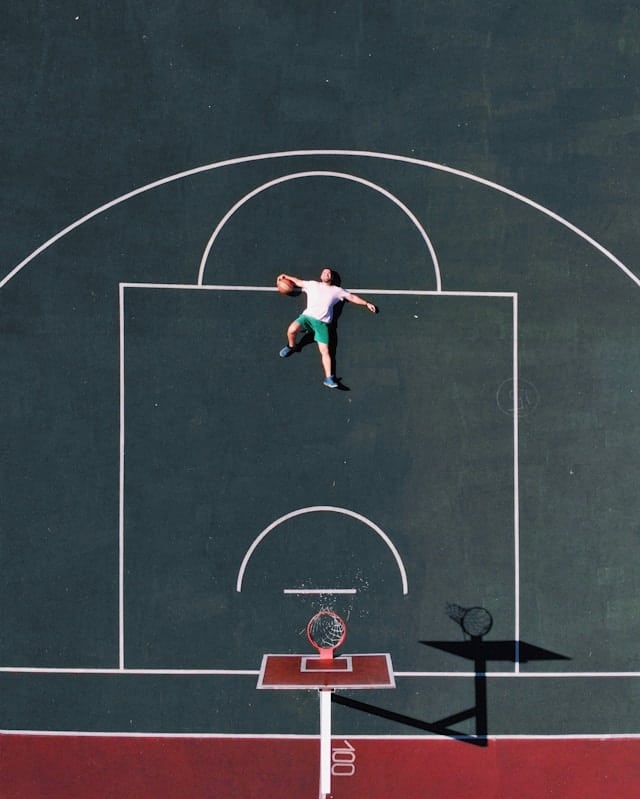In the world of handball, it is well known that the difference between a good team and an exceptional one often lies in the quality of their decision making. In a fast-paced, strategic game like handball, the ability of the team to make swift, accurate, and effective decisions can spell the difference between victory and defeat. This article aims to provide an insightful analysis into ways of enhancing tactical decision-making in team handball. Drawing upon studies and expert opinions from elite handball players and scholars, we will delve into techniques and methods that can help handball teams improve their decision-making performance.
Learning from Elite Handball Players
Studies have shown that there is much to learn from the decision-making processes of elite handball players. According to a study published on PubMed, these players have developed a particular ‘expertise’ in making quick and accurate decisions during a game.
Also to discover : How Can Structured Play Influence Skill Development in Child Gymnasts?
They achieve this by constantly studying the game and their opponents. Video analysis is a common tool used among these elite players. It allows them to review their performance, understand their mistakes, and identify opportunities for growth. By using video analysis regularly, players can become more aware of their strengths and weaknesses, and can improve their decision-making skills.
In addition, elite players are often experts in reading the game and predicting the next move. This ‘game sense’ is developed over years of playing and studying the sport. It is not something that can be learned overnight, but it is definitely a skill that can be honed and developed with time and practice.
Also to discover : How Can Smart Racquets Provide Feedback for Technique Improvement in Squash?
Role of Sports Psychol in Decision-Making
The study of sports psychology, or ‘sports psychol’, as it’s often referred to, can also play a pivotal role in improving decision-making. One specific technique that has proven to be effective is mental rehearsal. This technique involves visualising different game scenarios and deciding what action to take in each situation.
By regularly practicing mental rehearsal, players can improve their ability to make decisions under pressure. This is because the brain becomes more used to the process of deciding and can, therefore, make decisions more quickly when under the stress of an actual game.
Moreover, sports psychol also emphasizes the importance of clear communication within the team. A team that communicates well will be able to make collective decisions more efficiently. Therefore, teams should invest time and effort in improving their communication skills, both verbally and non-verbally.
Importance of Specific Training
Developing tactical decision-making skills doesn’t just happen in the heat of the game. It requires specific training drills designed to enhance these skills. These drills often involve high-pressure situations, which mimic the conditions of a real game.
Such drills can be designed with the help of video analysis. By reviewing previous games, coaches can identify situations where the team’s decision-making was less than optimal. These situations can then be used to design specific training drills.
Through this type of specific training, players can practice making decisions under pressure, which can lead to improved performance during actual games. This is a method employed by many successful handball teams around the world, and it is something that any team looking to improve their decision-making should consider implementing.
Leveraging Technology for Better Decision-Making
In this digital age, technology has come to play a significant role in sports. For handball, tools such as Google’s artificial intelligence and other sophisticated software can analyze extensive amounts of game data to help teams make informed decisions.
For instance, using AI, teams can analyze their opponents’ playing patterns and make strategic decisions based on this knowledge. In addition, with the help of technology, teams can track their own performance and identify areas where they need to improve.
The use of technology in decision-making is not limited to just analyzing data. There are also tools that can assist teams in communication, which as we’ve discussed earlier, plays a crucial role in decision-making. Communication tools can help teams coordinate better on the field, leading to more effective decisions.
Engaging with the Scholarly Community
Lastly, it is important for teams to engage with the scholarly community. Scholars in the field of sports science often conduct research that can provide valuable insights into improving decision-making in handball.
Crossref is an excellent resource for teams looking to stay up-to-date with the latest research in handball decision-making. By regularly reading scholarly articles, teams can gain a deeper understanding of the game and can implement new strategies based on these findings.
Furthermore, engaging with the scholarly community provides teams with the opportunity to contribute their own experiences and knowledge. This not only helps to further the field of sports science, but it also allows teams to reflect on their own practices and identify areas for improvement.
Emphasizing Problem-Solving and Strategic Thinking
A crucial aspect of enhancing tactical decision-making in team handball involves fostering problem-solving and strategic thinking capabilities. Players must be able to quickly assess game situations, evaluate potential solutions, and choose the most effective course of action. This level of strategic thinking cannot be developed overnight but requires consistent practice and highly focused training sessions.
There are several ways to instill these skills within your team. One effective method is through the use of ‘decision-making drills’. These drills, designed to emulate real-world game situations, challenge the players to respond quickly and accurately. They are invaluable in helping players to understand the dynamics of the game and to make better decisions under pressure.
Another promising approach is the integration of cognitive training exercises into the team’s regular training regimen. For instance, exercises that improve working memory or spatial awareness can significantly enhance a player’s ability to assess the game situation and make an informed decision.
Additionally, the use of technology can substantially augment this facet of training. Sophisticated virtual reality systems can now simulate real game situations, enabling players to practice their decision-making skills in a realistic yet safe environment.
Utilizing Scholarly Resources for Continuous Improvement
Handball players and coaches should not underestimate the value of staying up-to-date with current research and scholarly material related to decision-making in team sports. Scholarly platforms like Crossref and PubMed provide a wealth of information that can add depth and nuance to a team’s understanding of tactical decision-making.
For instance, reading PubMed abstracts can give teams a quick overview of the latest studies on the subject, while the full text Google Scholar articles or Crossref full text provides more in-depth information. Furthermore, tools like DOI PubMed and DOI Crossref can help teams keep track of specific articles for easy reference during decision-making discussions.
Yet, the scholarly community is not just a source of information but can also be a platform for contribution. Teams can share their experiences, methods, and findings with the academic community, which can enrich the field of sports science and contribute to the overall understanding of tactical decision-making in handball.
Conclusion
In conclusion, enhancing tactical decision-making in team handball requires a multifaceted approach. From learning from elite handball players, leveraging sports psychology, focusing on specific training, utilizing technology, and engaging with the scholarly community, there are numerous ways to sharpen the decision-making skills of a team.
A key takeaway is that developing tactical decision-making skills is not a one-time event but a continuous process. A team must be willing to invest time in regular training, learning, and reflection. The use of technology, such as Google’s artificial intelligence and other software, can help in this endeavor by providing insights and data to inform decision-making.
Ultimately, improving decision-making in team handball is about fostering a culture of continuous learning and improvement. It involves fostering an environment where players are encouraged to learn from their mistakes, to seek out new knowledge, and to continually strive to enhance their skills. This approach, combined with the strategies outlined in this article, can significantly enhance a team’s decision-making capabilities and set them on the path towards becoming an exceptional handball team.






